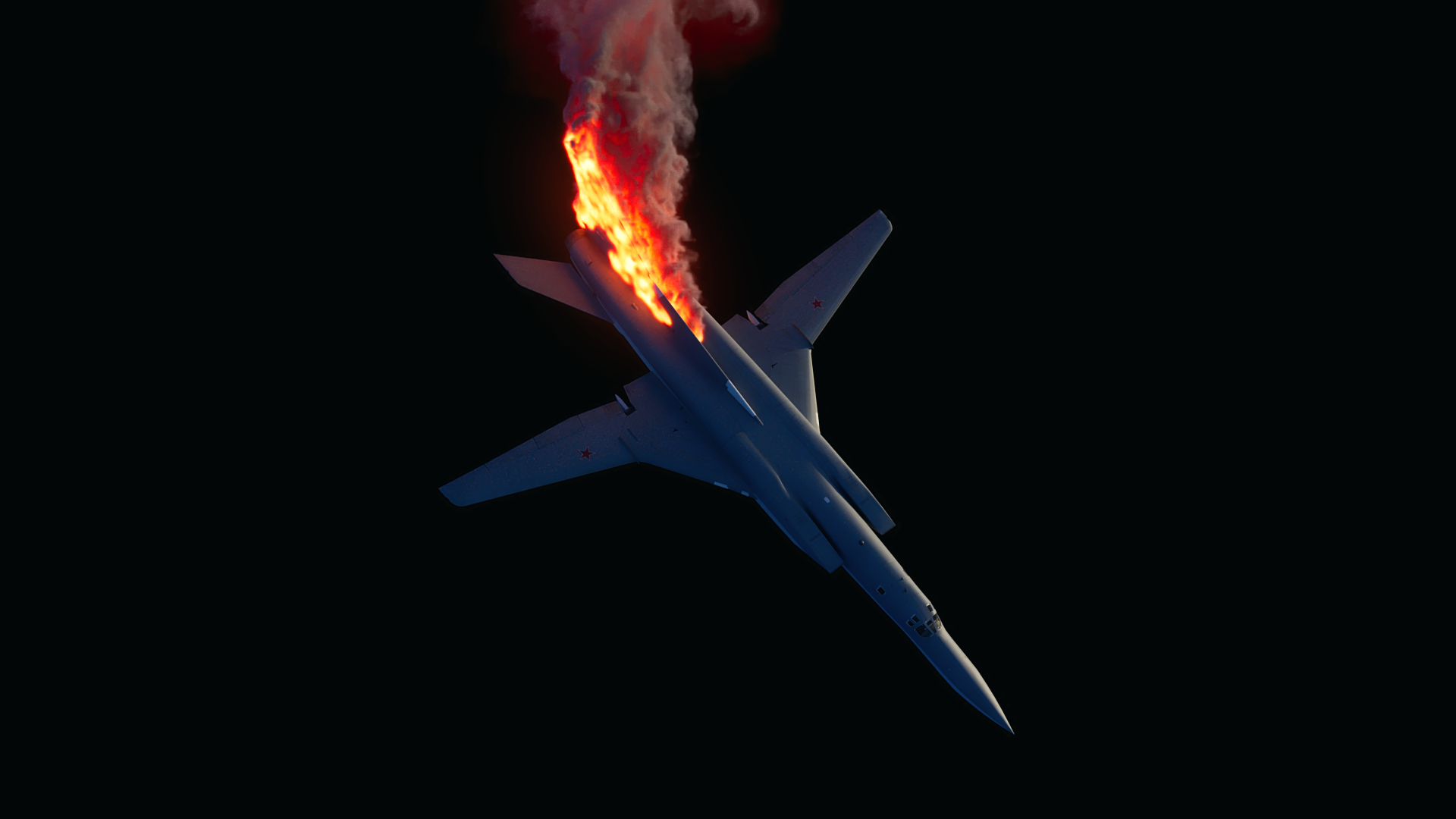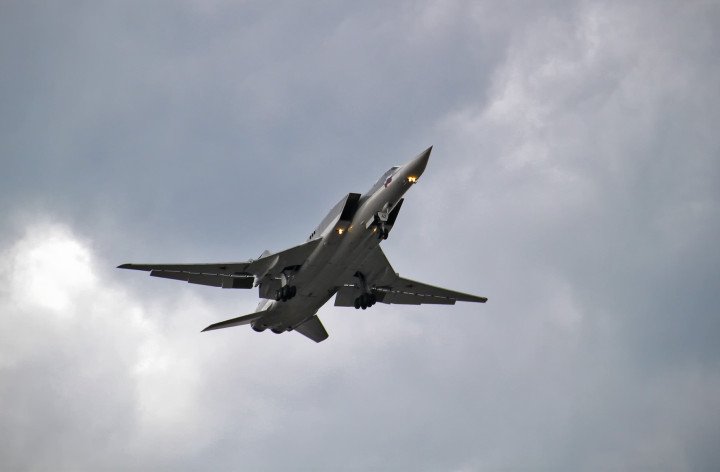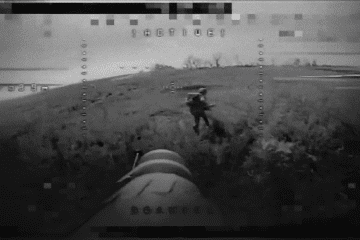- Category
- War in Ukraine
Ukraine Downed a Russian TU-22M3. Here’s What You Need to Know about the Bomber and Its Cruise Missiles

Weapons created more than two decades ago by the Soviet Union still pose a threat to civilians in Ukraine today. But Russia doesn’t seem too bothered by that.
On April 19, 2024, the Ukrainian Air Force successfully shot down a Russian TU-22M3 strategic bomber for the first time. This is a significant event: over the two years of the full-scale invasion, these aircraft have launched over two hundred cruise missiles at Ukraine. However, due to their characteristics and Ukraine's limited air defense resources, they have safely returned to Russian airfields after each mission. One has finally failed to do so.
⚡️Russian strategic bomber Tu-22M3 shot down in the sky over the Stavropol Territory of the Russian Federation, reports say.
— UNITED24 Media (@United24media) April 19, 2024
📹: monitor pic.twitter.com/JiPjO9S358
In this piece, we briefly look at the features of the TU-22M3, the X-22 cruise missile, and explain why they can cause extreme destruction in Ukraine with almost no consequences.
What you need to know
The development of the TU-22 strategic bomber began back in the Soviet Union—with the project starting in 1965. After many trials, modifications, and changes, the aircraft went into production in the mid-1970s. The project was then terminated in 1993.
The TU-22M3 is also called the "nuclear warplane" because the X-22 cruise missile it carries was specifically designed for launching nuclear warheads. The aircraft can also carry over 10 tons of free-falling bombs.

After the start of the full-scale invasion, Russia announced its intention to resume TU-22M3 production at the factory where it was originally developed—in Kazan. However, the two new bombers that were presented to the government since, were assembled from old Soviet components. New production of these jets has not yet been possible.
The aircraft is terrifying because of the weapons that it can carry and also because of how Russia uses them. This concerns the X-22 cruise missile. Although Russia uses non-nuclear munitions within these missiles to bomb Ukraine, the X-22 remains a massive threat because of its key characteristics.
This cruise missile was developed as an anti-ship missile, primarily targeting large enemy vessels—such as aircraft carriers—at distances of up to 600 km. The missile itself is highly inaccurate. But because the target—such as an aircraft carrier—is large, the missile is likely to hit it. In addition, the TU-22M3 can launch three missiles at once.
However, in the war against Ukraine, Russian aviation uses the X-22 for purposes other than intended—it targets densely populated cities. As a result, due to the missile's significant inaccuracies, civilians become its targets. In 2022, an X-22 missile hit a large shopping center in Kremenchuk, resulting in 20 deaths. In 2023, a similar missile hit a residential building in Dnipro, resulting in 46 deaths. In 2024, another strike hit a residential building in Dnipro, with nearly 10 deaths reported.
.@ZelenskyyUa As of the evening of June 28, the total number of russian missiles that have hit Ukrainian cities are estimated at 2,811.
— Defense of Ukraine (@DefenceU) June 28, 2022
russian missile hits shopping mall in the city of #Kremenchuk pic.twitter.com/94fwmyDDUl
We can only speculate about what exactly Russia intends to strike, as the missile's margin of error can be several kilometers. The use of such weapons in cities against civilian populations constitutes a violation of the rules of war and a war crime. But Russia remains undeterred.
How is Ukraine fighting back?
The TU-22M3 is large: 40 meters long, with a wingspan of up to 34 meters. It's a large, visible target, which could be reachable with advanced air defense systems. However, Ukraine has a limited number of these systems, as well as missiles for interception.
The TU-22M3 typically launches cruise missiles at Ukraine from distances of 300-500 km, not entering Ukrainian airspace. They may not even come close to it. In the attack on Kremenchuk, the TU-22M3 may have launched its missile from 100 km away from the Ukrainian border. Thus, without appropriate weaponry, Ukraine simply can’t shoot down such aircraft. Intercepting X-22 missiles flying at ballistic speeds of up to 4000 km/h is also extremely difficult.
Little is known about the operation on April 19th; the Ukrainian Air Force hasn't disclosed details of how they managed to shoot down the aircraft, stating only that the target was within 300 km. However, since 2024, Ukrainian military forces have been using air defense systems closer to the front line more actively—destroying two A-50U radar aircraft and more than a dozen fighter jets. According to Reuters, citing its own sources, Ukraine may be using old Soviet C-200 systems, which are capable of shooting down targets at an altitude of up to 40 km and at a range of up to 300 km. Ukraine has not commented on this.
If Ukraine is provided with more air defense systems and long-range missiles, the skies over Ukraine will become safer.
But this isn't the only way Ukraine is trying to fight against enemy bombers. There have been reports of several Ukrainian drone attacks on Russian airfields where TU-22M3s are based—resulting in damage to the bombers. At first, there was unconfirmed data that Russia had around 60 TU-22M3s before the full-scale invasion. But the Head of the Main Intelligence Directorate Kirill Budanov corrected this later, saying that Russia had only 31 operational aircraft, 4 of which were taken out of action by Ukraine. One more was destroyed on the 19th of April, 2024.
Russia can only restore such aircraft at the Kazan factory. However, even the factory itself has been targeted: drones damaged the facility on April 17th.
Why destroying more may be a good idea
The X-22 missiles destroying Ukrainian cities can only be carried by the TU-22M3. If the bombers are destroyed, Russia will be unable to launch missiles at Ukraine for some time. According to Kirill Budanov, Russia has just over twenty TU-22M3s left. Therefore, with a sufficient number of modern long-range air defense systems, Ukraine can neutralize this threat—as it did today on April 19th.
Furthermore, destroying Russia's strategic aviation reduces security risks globally. As the main threat to global security today, Russia will be deprived of a significant portion of its offensive aviation. And it won't be able to restore it anytime soon.
-29a1a43aba23f9bb779a1ac8b98d2121.jpeg)

-f88628fa403b11af0b72ec7b062ce954.jpeg)
-b63fc610dd4af1b737643522d6baf184.jpg)



-24deccd511006ba79cfc4d798c6c2ef5.jpeg)